一 数据展示
二 结果展示
OpenCV可以加载训练好的权重文件和模型,例如加载Google图片分类模型和权重对上述图片分类
链接: https://pan.baidu.com/s/13T9KCOR8jTHyvkRykcKjCA 提取码: hhq4
# 导入工具包
import utils_paths
import numpy as np
import cv2
# 标签文件处理
rows = open("synset_words.txt").read().strip().split("\n")
classes = [r[r.find(" ") + 1:].split(",")[0] for r in rows]
# Caffe所需配置文件
net = cv2.dnn.readNetFromCaffe("bvlc_googlenet.prototxt",
"bvlc_googlenet.caffemodel")
# 图像路径
imagePaths = sorted(list(utils_paths.list_images("images/")))
# 图像数据预处理
image = cv2.imread(imagePaths[0])
resized = cv2.resize(image, (224, 224))
# image scalefactor size mean swapRB
blob = cv2.dnn.blobFromImage(resized, 1, (224, 224), (104, 117, 123))
print("First Blob: {}".format(blob.shape))
# 得到预测结果
net.setInput(blob)
preds = net.forward()
# 排序,取分类可能性最大的 [::-1]取反
idx = np.argsort(preds[0])[::-1][0]
text = "Label: {}, {:.2f}%".format(classes[idx],
preds[0][idx] * 100)
cv2.putText(image, text, (5, 25), cv2.FONT_HERSHEY_SIMPLEX,
0.7, (0, 0, 255), 2)
# 显示
cv2.imshow("Image", image)
cv2.waitKey(0)
# Batch数据制作
images = []
# 方法一样,数据是一个batch
for p in imagePaths[1:]:
image = cv2.imread(p)
image = cv2.resize(image, (224, 224))
images.append(image)
# blobFromImages函数,注意有s
blob = cv2.dnn.blobFromImages(images, 1, (224, 224), (104, 117, 123))
print("Second Blob: {}".format(blob.shape))
# 获取预测结果
net.setInput(blob)
preds = net.forward()
for (i, p) in enumerate(imagePaths[1:]):
image = cv2.imread(p)
idx = np.argsort(preds[i])[::-1][0]
text = "Label: {}, {:.2f}%".format(classes[idx],
preds[i][idx] * 100)
cv2.putText(image, text, (5, 25), cv2.FONT_HERSHEY_SIMPLEX,
0.7, (0, 0, 255), 2)
cv2.imshow("Image", image)
cv2.waitKey(0)
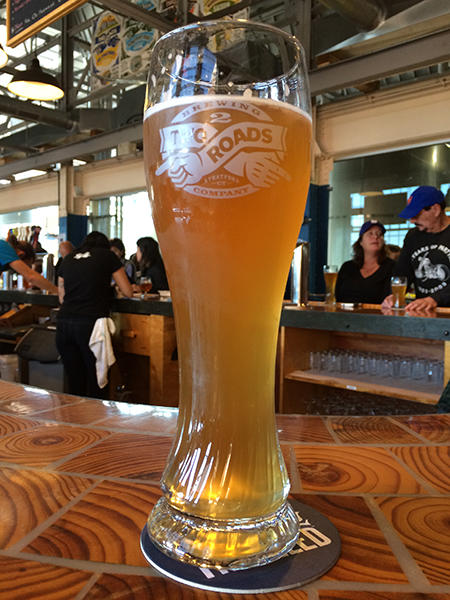 ]
]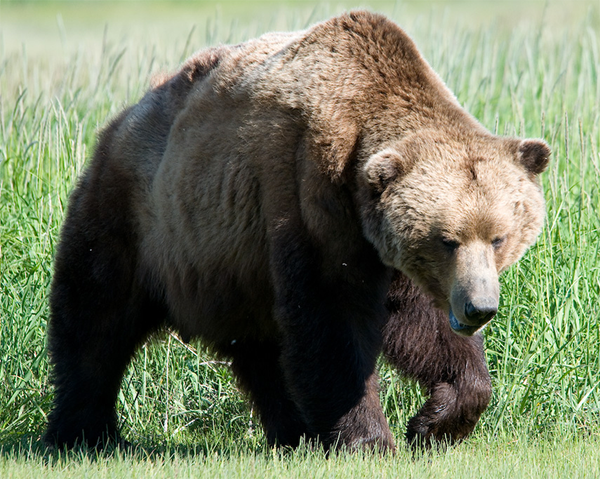



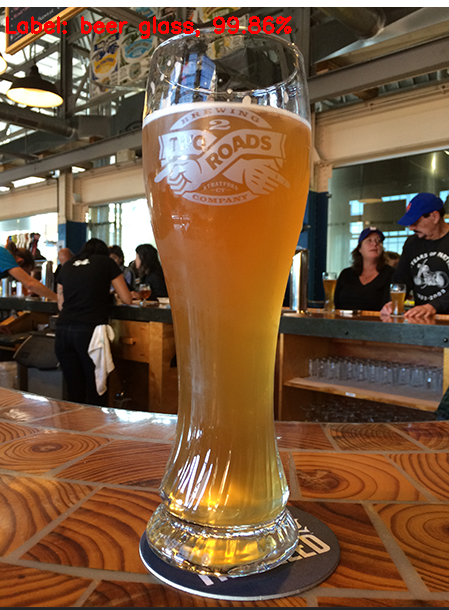
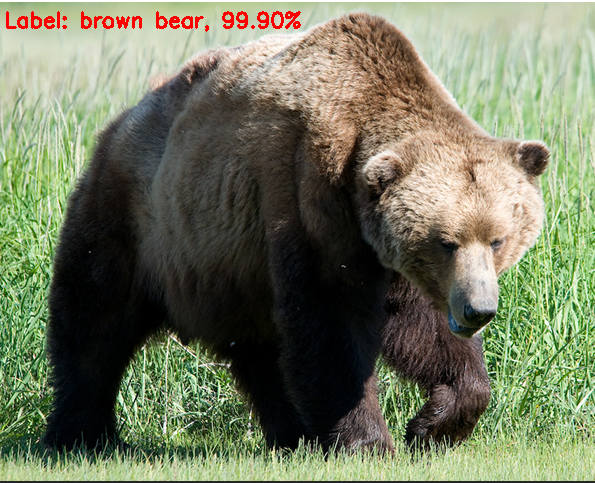

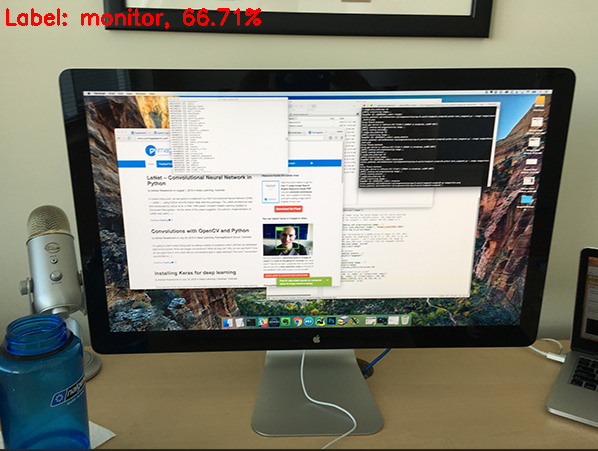 ]
]